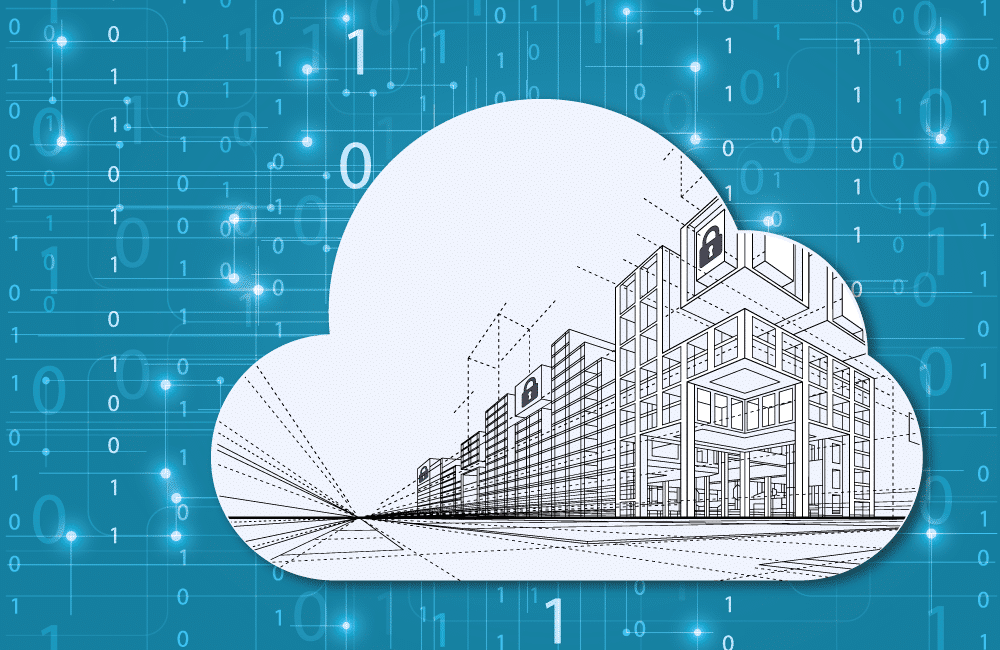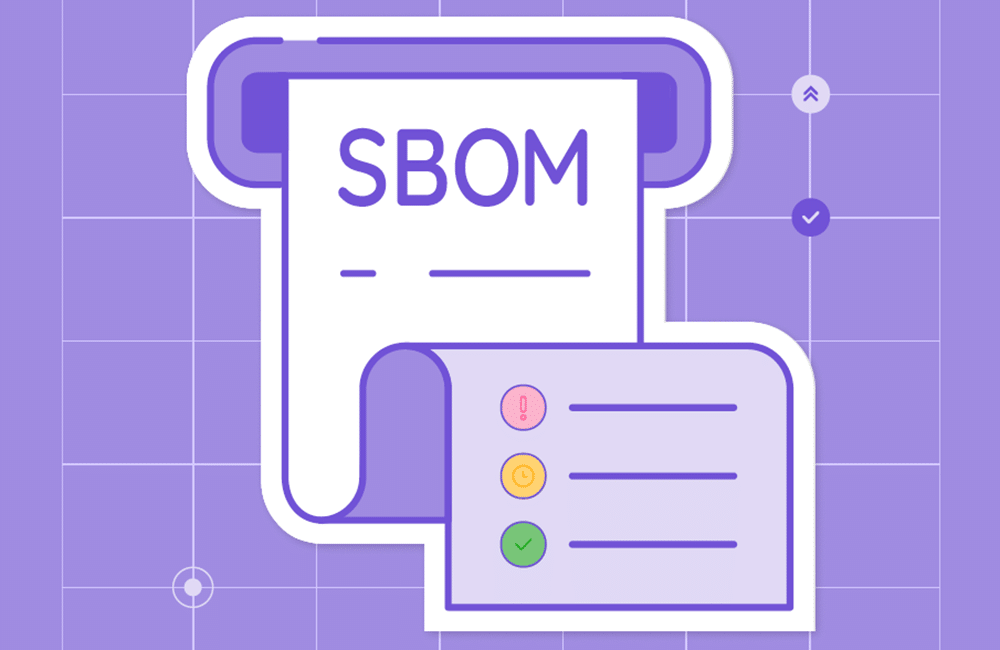Cloud Security Architecture: A Practical Guide

Table of Contents
What is cloud security architecture?
Cloud computing security architecture describes how an organization secures data, applications, and workloads hosted across cloud environments. It specifies all technologies — both software and hardware — allocated for protecting cloud assets, and defines the security responsibilities shared between the cloud services provider and the organization.
Cloud security architecture is a component of the organization’s overall security approach. It defines security layers specific to the cloud, the ideal platform structure, the optimal design, all necessary tools, software, and infrastructure, and best practices required by the cloud vendor or applicable standards and regulations.
It offers a blueprint that helps ensure the vendor and the organization cover all security requirements. It standardizes cloud configurations and explains how cloud operations and activities should be managed and secured.
There are several aspects typically covered by cloud security architecture strategies:
- Identity and access management
- Application and data protection controls
- Visibility measures such as monitoring, auditing, and logs
- The organization’s overall threat posture
- Compliance policies and governance
- Physical infrastructure security components
Why is cloud security architecture important?
Cloud environments offer huge and easily scalable data storage and a wide range of tools and applications that provides organizations with agility, efficiency, and cost-effectiveness.
Cloud services enable organizations to keep pace with market changes and provide them with the capability to rapidly scale their cloud computing services directly in line with operational needs. Cloud service providers can meet such changing needs almost immediately, giving customer organizations the agility to make quick data-informed decisions. However, organizations using cloud services may increase their exposure to risk, since security and governance for cloud-based infrastructure are not within their control. Cloud security architecture is therefore important because it helps to organize, control, and safeguard the applications and data within the cloud services that an organization uses. It lets organizations make the most of cloud offerings while reducing their vulnerability to attack and risk of exposure. Without it, the potential risk of using cloud-based services rises significantly.
Most organizations rely on cloud service providers to some extent, and applications are increasingly developed and run in the cloud. Therefore, cloud security has become increasingly important. At the same time, provisioning and security processes are shifting left and taking place earlier in the software development life cycle, moving responsibility towards developers and DevOps rather than IT. These teams now need effective tools to scan code for vulnerabilities and misconfigurations. They also need the means to mitigate and remediate these flaws without disrupting their workflow.
Cloud security threats that will impact your security architecture
Hackers and other malicious actors always seek new ways to infiltrate, steal, and damage organizations’ applications, networks, and data. Cloud security must stay ahead of them to remain effective and keep cloud services secure. Achieving this necessitates addressing some key threats when building your cloud security architecture, in particular the following:
Insider threats
When using cloud services, you entrust workloads and data to the staff responsible for maintaining the cloud infrastructure. However, giving access to workers in your organization and administrators at your cloud service vendor also raises the risk for insider threats..
You also need to consider if governmental entities can access your data. Security experts pay increased attention to industry regulations and laws that specify if a government can employ court orders to access public or private cloud data.
DDoS attacks
Distributed denial of service (DDoS) attacks normally involve bombarding a system with requests until it fails. Security perimeters and tools can often deflect DDoS attacks, but at a certain scale, no on-premises security solution can withstand a DDoS attack.
Attacks of this kind continue to escalate in size, frequency, and severity. The team at Microsoft Azure reported an unprecedented level of DDoS activity in the second half of 2021, as bad actors launched increasingly complex attacks worldwide, paying particular attention to the gaming industry and Voice over IP (VoIP) service providers.
Cloud providers and third-party security vendors offer cloud-based protection against DDoS attacks. And when attacks occur, cloud environments make it possible to shift workloads from the affected system to other instances of a service or applications.
Cloud edge attacks
Edge computing involves capturing, storing, processing, and analyzing data near the client, where the data is generated, instead of in a centralized data-processing warehouse. Often it is performed by intelligent devices, at the same location where the data is generated. Edge computing systems expedite the processing of that data before devices send the data on for further use by other applications and teams. Put simply, the edge of the network is closer to the data source. Edge containers and cloud-connected edge systems are located there, while cloud containers operate in a data center. Organizations that have already implemented containerized cloud solutions can easily deploy them at the edge.
Global cloud vendors cannot directly build and run facilities all over the world. Rather, they need partners to provide services to rural regions or geographically isolated locations. Edge computing also takes some of the burden off the centralized cloud service and enables organizations to process data faster, exactly where it’s generated, while relieving bandwidth pressures, and offering improved data management, faster insights, and more versatility. Plus, it reduces the risk of your data being compromised if cloud services providers are targeted by attackers.
However, edge computing comes with its own risks. It offers attackers a different and separate attack surface and an alternative way of infiltrating valuable systems and data. The server architecture is not under the direct control of the cloud service provider. So, the provider is neither able to comprehensively monitor and ensure physical box integrity for the hardware, nor take full responsibility for any vulnerabilities in the software used at the edge. Likewise, they cannot guarantee protection against physical attacks.
Social engineering and account takeover
Almost all cloud systems are susceptible to social engineering attacks, in which attackers trick employees or end users into violating security policies or sharing private information. The risk of account takeover exists in every industry, but it is more severe in a cloud environment, particularly as users increase, driving similar growth in data volumes and application usage.. Depending on how access is set up, cloud users can gain access to a wide variety of assets, and sensitive data can quickly become exposed to unauthorized parties or the public internet.
Core principles of cloud security architecture
Here are the core principles of cloud security architecture:
- Security by design. Cloud architecture should define and integrate security into its design to prevent misconfigurations. For example, the design should not allow a network link between a database containing sensitive data and the public internet. This restriction prevents access to sensitive data by design.
- Network perimeter security. The shared responsibility model requires cloud customers to secure traffic that flows in and out of cloud resources. Cloud security architecture should include measures that secure the connection points between the public internet, the corporate network, and the cloud deployment.
- Segmentation. Threat actors often attempt to move laterally across the network to attack additional machines. Segmentation splits the network into isolated pieces that limit the scope of lateral movement. Cloud security architecture strategies use segmentation techniques to reduce the impact and scope of a security breach.
- Visibility. Multi-cloud and hybrid-cloud deployments are more challenging in terms of visibility. An effective cloud security architecture accounts for all tools and processes required to maintain visibility across the entire infrastructure.
- Unified management. Organizations use numerous tools to manage their security. Cloud security architecture should include a tool or several tools that unify the management of security tools and processes. The goal is to maximize productivity and ensure teams and technologies can quickly and effectively respond to security events.
- Automation. Automation enables quick updates and provisioning of security controls across cloud environments. Automation tools can also identify and remediate security gaps like misconfigurations in real-time.
- Cloud compliance. Many organizations must comply with regulatory laws such as the European General Data Protection Regulation (GDPR). Visibility into cloud-based data and processes that come under these laws is critical to achieving compliance.
Cloud security with Mend Infrastructure as Code
With the shift of applications to the cloud, and organizations’ escalating reliance on cloud service providers, securing your cloud environment and provisioning infrastructure has shifted from IT teams to developers and DevOps teams.
Mend Infrastructure as Code (IaC) helps these teams secure IaC templates and check for security issues, compliance violations, and other misconfigurations. Developers can detect, track, and fix these misconfigurations as part of their normal workflow without leaving their code repositories to view results or set up a separate workflow to scan. With Mend Infrastructure as Code, you can:
- Secure your cloud, containers, and Kubernetes
- Identify security and compliance gaps earlier in the cloud development lifecycle
- Protect your production environment
- Free your security teams to focus on runtime issues
Mend integrates with the leading cloud service providers, such as AWS, Microsoft Azure, and Google, and offers end-to-end open source management for containers such Kubernetes, Docker, GitHub, and JFrog, so you can keep your open source components secure and compliant throughout the development life cycle from inside your containerized environments.


